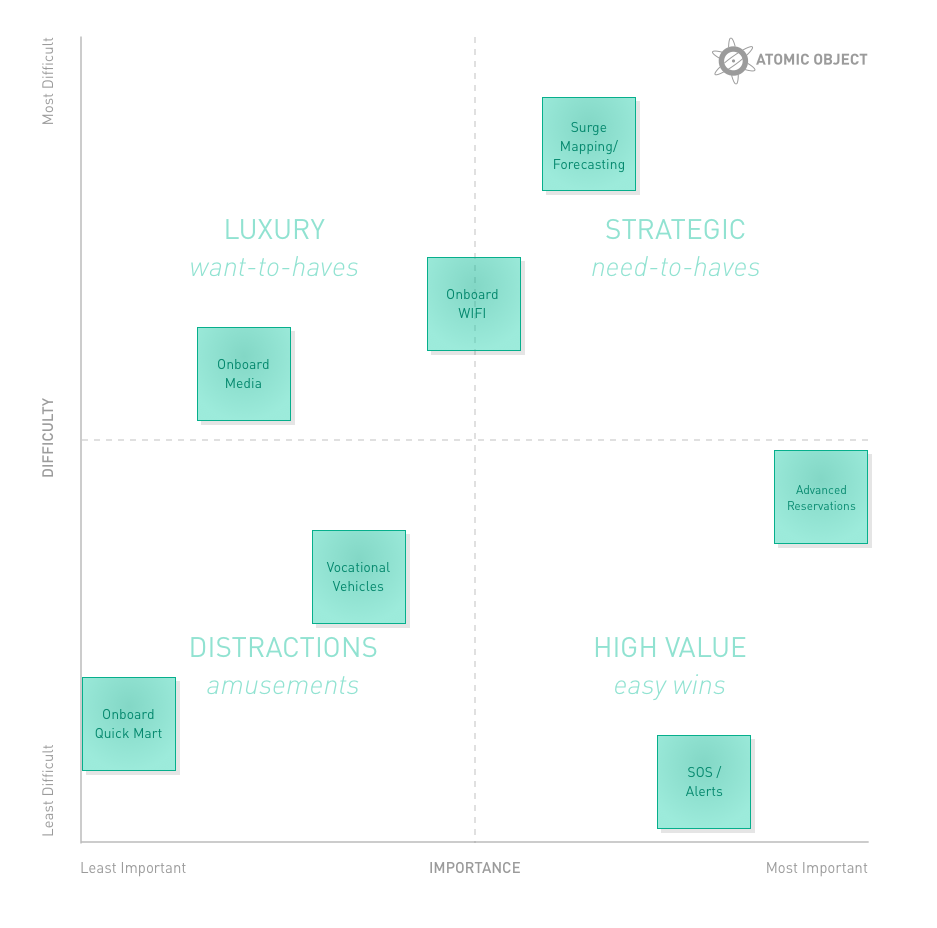Article summary
If you’re a member of an Agile software team, you know that the routines of Agile can sometimes feel tedious. And it’s hard to know what to change. Do you need to change your meeting frequency? Can some routines be eliminated? Should you scrap Agile altogether?
Rather than abandoning Agile, consider incorporating some simple design thinking exercises to stimulate new ideas. Design thinking provides a framework for creativity that encourages you and your team to think outside of the box of your daily work. Here are three ideas for mixing up your Agile routine with design thinking exercises.
Prioritizing Work
If your team struggles to prioritize work, consider using a Difficulty and Importance Matrix, which can help you prioritize items and understand their relevance.

Make sure you treat each variable separately. Don’t cheat by considering difficulty and importance at the same time; the true value of the activity is evaluating these two things independently.
Once you’ve evaluated the features, you’ll have a better idea of where you can achieve higher leverage on your project without wasting significant resources. This is also a good way to identify features that need to be moved to the icebox until they can be simplified or they become higher level.
You can also use this activity to consider scaling back features. If something in your “strategic” quadrant seems a bit out of reach, think about reducing it to the minimum viable product. This could slide it into the “high value” quadrant of the matrix and give your team an easy win.
Assigning Work
When you’re assigning work for a sprint, it’s a win-win for your team if you can assign work to people who are excited about working on that task. To get a better idea of your colleagues’ interests, consider running a Hopes and Fears activity. It will show what your teammates are excited to learn (hopes) and where you’ll need to provide extra support to them (fears).
Consider running this exercise once every few months to check in and see how your team’s hopes and fears are evolving.
Running a Retrospective
When you want to zoom out and get a broader perspective of how a project is going, try using the Rose, Bud, Thorn exercise. This can give you an idea of where the project is running smoothly, where it needs some work, and what folks want to do differently going forward.
I would recommend facilitating one of these activities every quarter to check the pulse of the project, celebrate wins, and see where the team has room for growth. Pair Rose, Bud, Thorn with Affinity Mapping to find patterns in the responses.
I was able to facilitate a retrospective in this way recently, and here are two things that I really liked about it:
- Because it’s facilitated with sticky notes, each person’s voice is heard. The playing field is leveled, which means you may hear opinions from people who don’t often speak up in meetings.
- Setting up is simple. All you need are some colored sticky notes and a few permanent markers!
I’m excited to continue finding ways to bring design thinking into my daily work. The structure of the activities creates a framework for processing information in a way that leads to creative and interesting solutions.
If you’re a developer who applies design thinking activities in some other way, I’d love to hear more about it! Drop me a comment below.

